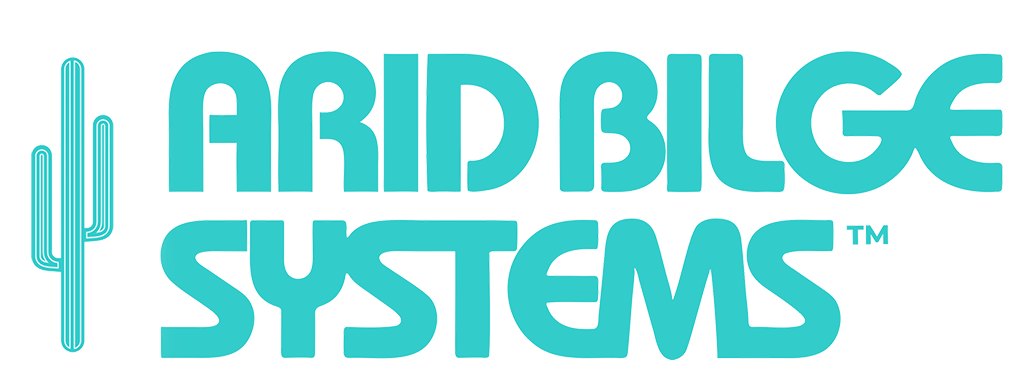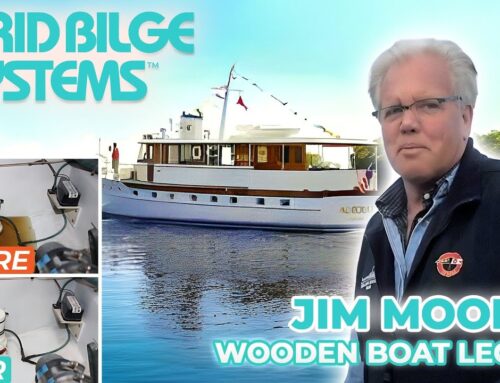Alfred Baurley of Arid Bilge Systems interviewed Albemarle Boats‘ Keith Privott at the 2024 Miami Boat Show to talk about the Arid Bilge System and his line of boats.
See below for a transcript of the entire interview.
Alfred: Albemarle has been around for many years, and they produce the highest possible quality of boats, highest possible quality finish, and they want to see their boats last. That’s where the Arid Bilge System delivers that clean, dry, fresh boating experience. Keith, you mind telling us a little about that?
Keith: Yeah, like you said, it’s from the maintenance standpoint, for the longevity of the boat, we try to use the top quality materials in the boat. Everything from even hardware: instead of using a typical 316 stainless, we’ll use chrome-plated stainless where possible. So, you’re always trying to upgrade materials and use the best quality, and part of that is to keep that boat looking as good and functioning as well.
Alfred: Albemarle has been around for how long now?
Keith: Forty-five years.
Alfred: All right. Tell me a little bit about your boats.
Keith: So, we are primarily offshore fishing boats. We do build some smaller dual consoles, but our customer focus tends to be more on the hardcore fishing guys. We have typically a little bit heavier construction. We like to think we pay a lot more attention to detail and just a little bit more refined boat.
And that’s how your system comes into play as far as what we offer. We have customers that really pride themselves on maintaining boats, and a lot of those customers do the maintenance themselves. It’s just a labor of love for them to tinker around on a boat and keep it clean and upgrade everything they can.
Alfred: You would say that the Arid Bilge System really helped improve your line of boats?
Keith: I’d say so. I mean, it’s one of those systems that you don’t have to think about it. As a builder, you like systems that you can put in, and if you don’t hear back from them, that means it’s functioning correctly, and it’s not an issue. We use so many components on the boat. We deal with thousands of vendors and at the same time, we try to get the best quality you can get. The idea is to offer an experience where they don’t have to worry about replacing components or fixing. They can enjoy the boat instead of working on the boat. But also just the appearance and the odor, I mean, it just plays into everything we’re trying to do and offer better boating experience–less hassle, and more enjoyment out of the boat that they’re paying us to build.
Alfred: So one of the point with the Arid Bilge System is, we go in and make everything completely bone dry, and when it’s a dry and clean environment, it’s a happy environment in your boat. So you would say that it coexists very well in that sort of fashion for you?
Keith: Absolutely. We do finished bilges, obviously. It’s almost like it’s going to a next level over the last 20 years in particular, where it’s not the utilitarian, “let’s go out there and just fish and hammer the fish every day and come back and wash the boat down.” It’s like everything’s become more refined, and the expectations now are that you open an engine room and you’re almost dazzled by how everything is just so clean and white and well appointed. So we’ve really gone down that route, particularly in the last ten years, to pay more attention to the level of fit and finish, even down in the bilges. So when you open an engine room, everything’s nice and clean and bright, and you look down, and you don’t see puddles of water in the bilge, you don’t have any stain. We finish the bilges. A finished gel-coated bilge, if you let water sit there for weeks at a time, you start to see a little staining here and there.
Sidebar: read more about bilge paint and standing water on our blog here.
Overall, it just keeps the appearance of the boat up. It keeps the maintenance at a minimum. It’s kind of a no-brainer for us to put the system on the boat. Like I said, the boats are becoming more and more refined. The systems are becoming more complicated. Everything’s becoming integrated now, so we have to grow with the business and with the technology. But at the same time, the core principles are still there of “build it stronger than it needs to be, build it for the worst-case scenario, and hope for the best.” And at the end of the day, regardless of what kind of conditions you get caught in, you’re going to come home with the same boat structurally and aesthetically. It’s going to hold up over time. And we do that by the techniques we use, building more glass than we should. Our boats are typically heavier than most, and that’s because of the materials we use. We’ve learned the construction techniques over the years, glassing everything back together and creating almost like a unibody construction where nothing moves unless everything moves. Through experience, we’ve figured out what holds up on a terrible day offshore, and we build them for that scenario.
Fast forward to today, and our largest boat is 53′ while our smallest is 25′. We have a pretty broad range of product, but it’s all dedicated to being offshore-capable, holding up over time, and being the same boat even in 20 years that it was the day it was built as long as it’s maintained and taken care of.
Alfred: Thank you so much, Keith, for giving us a short testimonial and talking about your boats. It’s been an honor, and thank you so much for the business, and I appreciate working with you.
Keith: Sure. Thank you for providing a good product. It contributes to ours.



